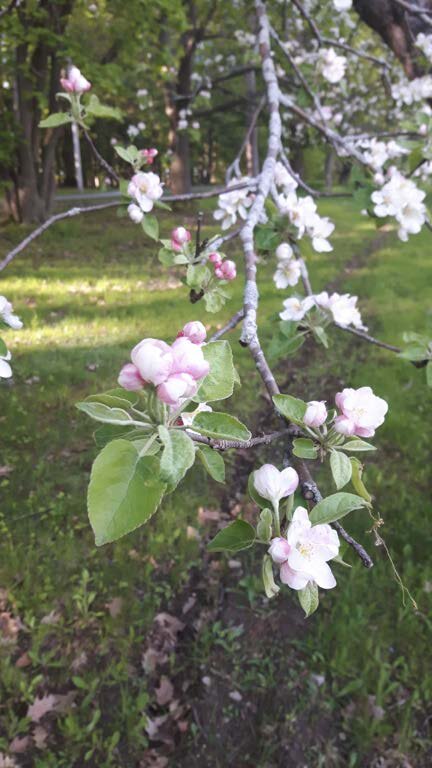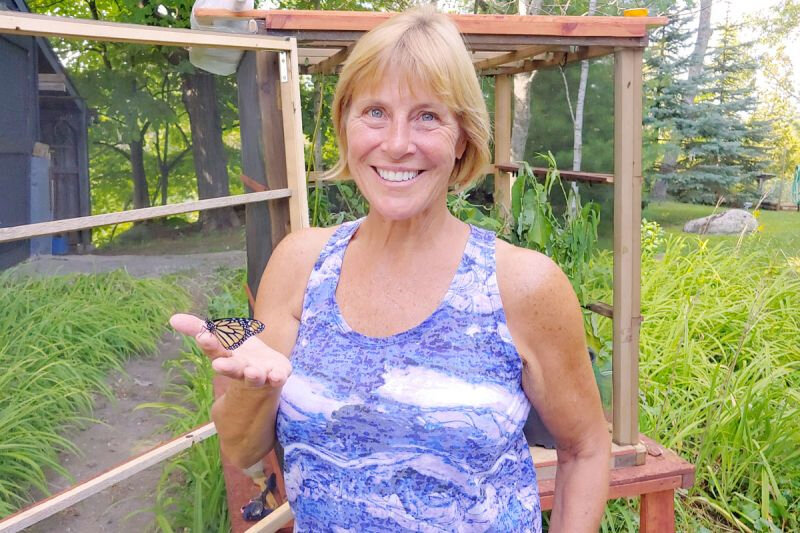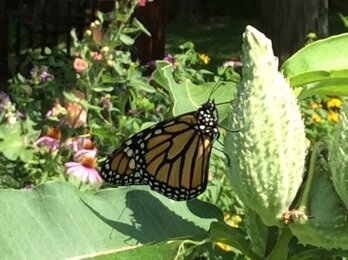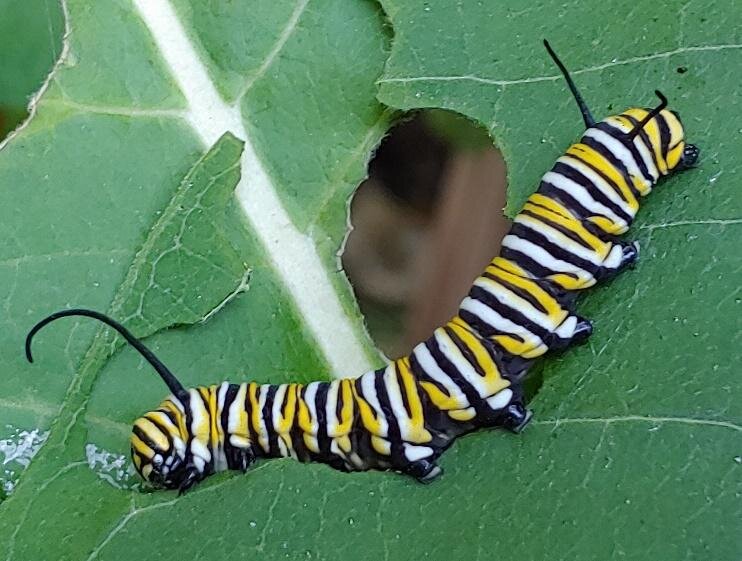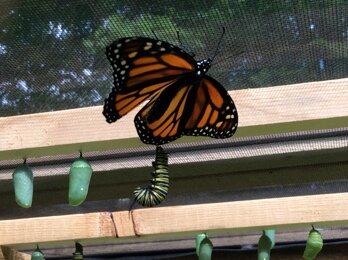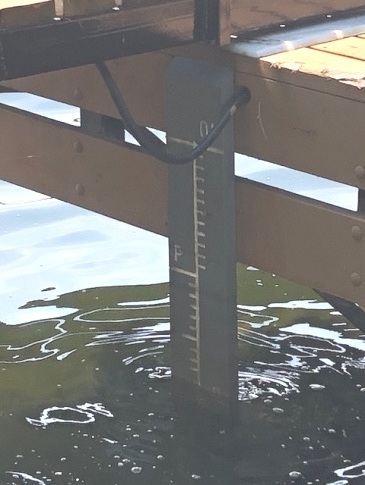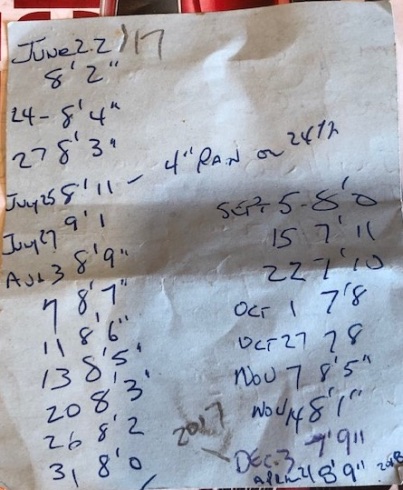
That One Last Move
At a ‘certain age’ there often comes a dream, a longing, for a fresh move to afresh place, one last time. For some it’s a down-size, for others, just a side-size.For the brave and bold, an up-size! We had a small farm outside of Bobcaygeon, Ontario with horses, heritage large British Black pigs, laying hens and an enormous…
At a ‘certain age’ there often comes a dream, a longing, for a fresh move to afresh place, one last time. For some it’s a down-size, for others, just a side-size.For the brave and bold, an up-size! We had a small farm outside of Bobcaygeon, Ontario with horses, heritage large British Black pigs, laying hens and an enormous garden that I grew just for the fun of it. And a handful of apple trees, newly planted. Our home was made from stackwall, pulled from the cedar bush 35 years ago, hauled on Marc’s back and built into a house. It cost $670 to therafters. Family was far away, as was Peterborough for any major shopping andmedical needs. With grandchildren arriving and retirement from 9 - 5 just around the corner, we succumbed to the call for that one last move, to be closer to family and to retire to a chosen lifestyle of life on the land. Casually looking at options,we thought it would be great to match farm land with lakefront. The lookingbrought us to South Frontenac. Kingston is such a perfect larger centre with its first-rate hospitals andtransportation options, the County is so beautiful and the weather was even better!
We moved to Inverary in May, 2014 to a property with two ancient apple orchards, large hayfields, barn, pastures, a sugar bush, garden space to meet my expectations and stunning Loughborough Lake out theback door. This was a definite up-size. But it was the apple orchard that caught my eye. It was not inproduction, at all. Not a blossom was in sight the May we moved. When I was a little girl my parents had elderly Dutch friends with an apple orchard. I remember standing under one of the huge trees, branches reaching over me, covered in white scented petals. I’d never seen anything like it. The stunted crabapple in my Saskatchewan prairie backyard not exactly a close comparison. Researching, pruning, trimming, thinning, spraying with wild and wacky concoctions, experimenting, failing, pruning some more, refining the wild and wacky… after four years, we had fully restored our property’s heritage apple orchard. We maintain the orchard using organic methods only, no small task for apples as it’s not just us humans who like to munch on them! The existing varieties on the trees, all large standards and all over 65 years old, include two heritage exclusives, Canada Red Atlas and Canadian Red Melba. The Atlas is very rare and you’ll never find either at any grocery store; their flavour is spectacular, but they can’t be shipped or don’t store very well. Ergo…not commercially viable in our “store for a year and ship across the country”economy. There are also Heritage MacIntosh, Spartan, Yellow Transparent and one Hawkeye tree, which is the very original Delicious, when it was still delicious. Many new baby trees have been planted, all heritage or vintage varieties, including some famous trees from the past, but long forgotten today such as Wolf River, Belle de Boskoop, Esopus Spitzenburg and Rhode Island Greening.
Perhaps our apples taste so incredible because they are irrigated with fresh water from Loughborough Lake-! Who knows…it could be the secret sauce. What is not a secret is the beauty of South Frontenac, not only its many lakes, forests and farmlands, but its kind, welcoming and hardworking people. We are humbled and happy to be here.
The Butterfly Lady of Inverary
A year has passed since Susan Sutherland of Loughborough Lake, became affectionately known as 'The Butterfly Lady of Inverary', after word of her beautiful Monarch hatching habitats spread throughout the South Frontenac region. Her bountiful “Monarch mansions’ captured the attention of inquisitive neighbours…
A year has passed since Susan Sutherland of Loughborough Lake, became affectionately known as 'The Butterfly Lady of Inverary', after word of her beautiful Monarch hatching habitats spread throughout the South Frontenac region. Her bountiful “Monarch mansions’ captured the attention of inquisitive neighbours and fellow conservationists across Ontario, after an article was published in the Frontenac News highlighting her preservation efforts. An increase in sightings of these miraculous orange and black butterflies has been reported around the lake, thanks to Susan and many others who have created pollinator-friendly gardens and safe egg hatching havens of their own. From July-Sept 2019, Susan impressively released 155 healthy monarchs, which lead to a vast following of inspired individuals along the Monarch’s migratory path into Mexico. Among the dozens of inquiries and requests to visit ‘The Butterfly Lady’s” home, included Loughborough Public school teachers and one teacher from as far away as Toronto, asking for more information and hoping to collect eggs, caterpillars and chrysalis for their classrooms. As a result, Susan created an educational outreach program with an interpretive slideshow and an interactive portable habitat for students to witness each stage of the butterfly’s life cycle up close.
Causes for Decline: Among the many environmental factors leading to the rapid decline in the Monarch’s population is deforestation and loss of their essential habitat, the use of herbicides and pesticides, an increase in extreme weather and natural disasters due to global warming and the dwindling supply of native milkweeds that are essential for their survival. A female Monarch will lay approximately 300-500 eggs during her two to six-week lifespan, but only one out of one hundred eggs are likely to hatch in the wilderness due to a high number of natural predators. Even then, only 10% of the tiny eggs that do emerge as caterpillars will survive to become adult butterflies, which emphasizes the importance of creating a protected area for the eggs to hatch like Susan’s enclosed habitats.
What are the Consequences of the Decline? Butterflies, along with other important pollinating insects such as bees, bats and birds are an essential part of the natural food chain. They help to create and sustain healthy ecosystems that are critical for human life on earth. Simply put, without pollinators, no life forms on earth will survive.
What Can I Do To Help? Local efforts to re-populate pollinators have increased, thanks to outreach programs like Susan’s; but many more people are required to join-in and start planting in order to make a difference for the butterflies and bees. Milkweeds and nectar plants are the essential food source for the Monarch Butterfly. These can be grown in even the smallest gardens and yards, in both urban and rural areas. Other ways to help include purchasing your own Monarch hatching kit, making bat and bee houses, stopping the use of harmful herbicides and pesticides in your gardens and yard and supporting wildlife organizations. To find out more, see “Six Ways to Save Monarchs” or visit the Canadian Wildlife Federation. The survival of these life-sustaining species is in our hands. Please help “spread the word of the wings” by raising awareness and creating your own butterfly garden.
Further Reading
1. Frontenac News Article, Aug 22, 2019 The Butterfly Lady, Frontenac News, August 2019. https://www.frontenacnews.ca/south-frontenac- news/item/13391-the-butterfly-lady-of-inverary
2. Monarch Watch https://www.monarchwatch.org
Mr. Big: Action Brings Hope for Turtles
Mr. Big is big alright, and we are thankful and very lucky to still have him around. It was great fortune and great thrill for the lake association to share in Turtles Kingston’s release of this 18 kg, 80-something male Snapping Turtle last September. Mr. Big is back plying Loughborough Lake waters, after trauma treatment and rehabilitation at Sandy Pines Wildlife Centre (SPWC). He was likely wounded from a propeller injury after being struck by a motorboat, and was suffering from infected lesions to his head and neck when he was found.
Mr. Big is big alright, and we are thankful and very lucky to still have him around. It was great fortune and great thrill for the lake association to share in Turtles Kingston’s release of this 18 kg, 80-something male Snapping Turtle last September. Mr. Big is back plying Loughborough Lake waters, after trauma treatment and rehabilitation at Sandy Pines Wildlife Centre (SPWC). He was likely wounded from a propeller injury after being struck by a motorboat, and was suffering from infected lesions to his head and neck when he was found.
Action brings hope. Mr. Big simply would not be alive today, were it not for Colette Lacoursiere. A big thank you to this kind and gentle soul for tending to this stranded Snapper while on a lake outing, and immediately setting Turtles Kingston and SPWC in local-motion. Hope springs eternal from action like hers, and the everyday heroines behind Turtles Kingston (Mabyn Armstrong) and Sandy Pines Wildlife Centre (Sue Meech) and their network of volunteers.
The Lake Association had a taste of Mabyn’s tireless and passionate turtle advocacy last year. She was our guest speaker at our 2019 AGM. Turtles Kingston Facebook followers have grown to approximately 3,000 individuals, families, organizations with more than 1,000 new members last year alone. It means more people in our community are better informed about the plight of our turtles, and engaged in helping to protect our local turtle populations.
All eight of Ontario’s native turtle species are at risk. Snapping Turtles are listed as Special Concern under the Endangered Species Act. As with all species at risk, there is the general threat of habitat loss and degradation. But the low hatchling survival rate (<1%) of turtles and late age of maturity (15-20 years) make their populations very vulnerable to decline with any loss of an adult from seasonal run-ins with road vehicles and motorboats.
Mr. Big was one of 54 injured or dead turtles transported last year to SPWC through Turtles Kingston’s ‘Turtle Trauma Response Program’. Dead turtles are assessed for possible egg extraction and to confirm that they are deceased, saving them from a horrific slow death at the water’s edge or the side of the road. Turtles are ectothermic. They depend on external sources of body heat, which makes them capable of slowing down their breathing and heart rhythms. They can appear dead, but in fact may still be alive, and suffering greatly. Eggs are harvested for incubation from gravid female turtles that did not survive their injuries. SPWC incubated close to 800 turtle eggs last season which resulted in hundreds of hatchlings being released last fall.
The 'Turtle Trauma Response Program’ is a network of compassionate people and organizations in place, and ready to respond to a rescue call like the one that saved Mr. Big. There are veterinary clinics and the Kingston Humane Society who provide ‘Temporary Holding Stations.’ There are ‘Volunteer Transport Drivers’ who give of their time (and gas) to transport the wounded turtles. At the receiving end, there is SPWC working around the clock to rehabilitate not only turtles, but a myriad of other wildlife that otherwise would not have a chance of survival. As Mabyn so eloquently says, “A sincere thank you to SPWC. The stars in heaven shine brighter because of the selfless work they do.”
Thanks to Turtles Kingston we also have at hand the ‘Turtle Nest Protector Program.’ Turtle nesting season is now (end May to end September). A female Snapping Turtle will lay up to 60 eggs, preferably in sand or road side silt and gravel. But most of them will be gone come hatching time, generally mid-August. As for all turtles, spring is when adult females are most vulnerable to road mortality, and their eggs are most vulnerable to predation. Generally entire nests are robbed within the first 24 hours, since fresh nests emit a strong, attractive smell for predators. The biggest culprit is the masked bandit in all our backyards. Raccoons, but also skunks and foxes are ‘human-subsidized predators’ who spring feast on turtle eggs.
Last spring Turtles Kingston and Lee Valley Kingston announced the turtle nest protection program. It designed and sold more than 250 easy to build and easy to use ‘Nest Protectors’ at cost ($15.00- tax included along with the 4 galvanized spikes used to anchor the protectors, and educational ‘how-to’ pamphlets). They also organized a series of seminars where the public (children included) were invited to construct the Nest Protectors themselves. One of our members has donated a Nest Protector to the Lake Association, and several lake members purchased one of their own.
The BLLA is ready to spring into action, and we display our “I brake for Turtles” bumper stickers proudly.
“The protection we all can help provide the adult reproducing turtles is invaluable”, says an impassioned Mabyn. “Only three per cent of the world’s water is freshwater, and 20 per cent of that is in Canada. Turtles are integral to the freshwater systems, as they are the best water cleaners. Remove them, and the wetlands implode.” Mr. Big is a grand old wetland daddy, holding the secrets of our lake, reminding us of our how vulnerable its natural treasures are to human impact, and inspiring hope for all species at risk.
2019 Year End Financial Report
The 2019 year end finds your lake association in reasonable financial health – covering its costs and still with a sizeable account balance. This year there has been some modification in how the financial reporting is done, in an attempt to better present multiyear membership revenues within the standard current-year reporting period.
The 2019 year end finds your lake association in reasonable financial health – covering its costs and still with a sizeable account balance. This year there has been some modification in how the financial reporting is done, in an attempt to better present multiyear membership revenues within the standard current-year reporting period.
The re-introduction of the 3 year membership option has been very popular. At year end 2019 we had 34-3 year memberships. We also had a number of renewal memberships, both 1 year and 3 year, that were paid in 2019 but not going into effect until the year 2020. In the past, all membership income was included in the year that it was received, making that year's revenues look favourable and the future year revenues looked disproportionately low. Now all future year revenues are set aside in a deferred revenue account and only the current year income is reported as an income.
Our income sources are similar to previous years. 53% of the income comes from memberships and 29% from advertising. We do continue to receive very generous donations – they are 14% of our income. Insurance remains our largest expense, at almost 33% of our costs. Newsletter publishing, AGM costs and our Internet and social presence amount to 30% of costs. We continue to support the Federation of Ontario Cottagers’ Association (more commonly known as FOCA) for the work they do representing our lake association and the others. FOCA costs are 19% of our expenditures.
Overall the lake association generated an excess of income over costs of $131 for the year. The new deferred income account stood at $1,540. Total ending balance of cash, bank and investments is $10,412.
At this point last year I announced my retirement from the treasurer’s job. Alas it was not to be and I am now sitting in the job as an “acting” treasurer. On a more positive note, new Board member Catherine Sutton and myself are looking into setting up a ‘high-falutin’’ double-entry accounting system to manage the lake association’s finances. Who says old dogs can’t learn new tricks?
Newsletter: President's Message
NEWSLETTER in PDF
Who would ever have imagined a time where we would no longer be allowed to hug our grandchildren, we would visit our elders through glass windows, that planes would no longer fly in the sky, playing in parks would be prohibited, nature trails would be off-limits, attending celebrations or even a family get-together could be dangerous and the U.S. border with our neighbours would be closed to us, and our border closed to them?
NEWSLETTER in PDF
Who would ever have imagined a time where we would no longer be allowed to hug our grandchildren, we would visit our elders through glass windows, that planes would no longer fly in the sky, playing in parks would be prohibited, nature trails would be off-limits, attending celebrations or even a family get-together could be dangerous and the U.S. border with our neighbours would be closed to us, and our border closed to them?
Shockingly that is the world that we live in today. Every government, industry and organization has had to adapt to these changing times and the BLLA is no exception. Webinars and Zoom meetings are now the "new normal" for me. Groups such as FOCA (Federation of Ontario Cottagers’ Associations) and the Lake Networking Group address issues online. Some of our concerns are not new, such as boating safety, shore erosion, septic system and road maintenance, but others are new, namely how to now comply with Annual General Meeting requirements, governance and online meeting tips, insurance for unattended cottages, suspension of the water sampling program and what are the implications of cottagers relocating to the lake.
Another serious result of the pandemic was Frontenac County's surprise decision to extend the deadline for approving the draft plan conditions at Johnston Point for six months. This was approved by County Council within days of the province's lockdown announcement, despite the Province allowing ongoing construction projects to continue, and without the knowledge or consent of Township Council, and without even an application for extension from the developer. We remain mystified as to why the Johnston Point development was prioritized by the County during a pandemic, particularly in light of the facts that there was still three months left to go, draft conditions have been broken, a walking bridge had been installed in the PSW and without a building permit, the Overall Benefit Permit hasn't been made public, the Condo Agreement hasn't been signed back after almost two years, the Township voted last year against the agreement being extended, and a host of other reasons, including the developer himself telling Township Council that " Environmental standards could not be more elevated. It is unfortunate and regrettable and deplorable that the project, and those standards have not been respected here before." (Gavin Marshall - Principal - Magenta Waterfront Development Corp. June 4, 2019).
The Board has also been working on applying and receiving a grant to combat invasive species, researching enhancing our native fish populations, creating awareness of the need for pollinators, the impact of septic systems and protection of species at risk on our lake. Our newsletter includes articles on some of these activities. One positive from COVID-19 is that it has reminded us to appreciate those who help us. I would like to thank Watersheds Canada and the Gottlieb Foundation for their grant to purchase two new "Extractigators", our former BLLA director Susan Sutherland (Butterfly Lady) for giving us a tour of her "Monarch Mansion" (and inspiring my brother-in-law to make one for me), and Mabyn Armstrong of Turtles Kingston for including us on her determined quest to return "Mr. Big" back to his home. I would especially like to thank our volunteer Board Members for their guidance and assistance during this difficult time. Most importantly, I would thank you, our members, for your support and encouragement to protect our lake for now, and for generations to come.
Evonne Potts
President
The Whippoorwill
There is a bird in our neck of the woods that is most peculiar. It is so elusive that the first nests in Oklahoma were not scientifically documented until the 1980s. If you do get the chance to observe this bird, one of the first things you will notice is its bizarre shape. It has a beak that is rather out of proportion to its triangular body. It looks like a rock or stump of wood sticking out of a tree branch. Its plumage resembles a patch of rotting leaves or dried out moss you might step on before you spot it…
There is a bird in our neck of the woods that is most peculiar. It is so elusive that the first nests in Oklahoma were not scientifically documented until the 1980s. If you do get the chance to observe this bird, one of the first things you will notice is its bizarre shape. It has a beak that is rather out of proportion to its triangular body. It looks like a rock or stump of wood sticking out of a tree branch. Its plumage resembles a patch of rotting leaves or dried out moss you might step on before you spot it. As it is only active at night, our mysterious forest dweller spends its days motionless on the forest floor or a tree branch. A true master of stealth, its camouflage is superbly adapted to blend in with the undergrowth of the woodlands. This understory offers a pristine habitat full of its favourite food: Flying insects. At dusk and at dawn, just dark enough for the insects to swarm yet remain visible to its discerning eyes, it takes to its wings. It morphs from a pile of leaves into one of the most superb flyers in the animal kingdom. Silently, it launches itself from its perch, using its oversized mouth to catch the largest moths with swift 180-degree U-turns. How do we even know it is there? For it has the peculiar habit of repeated vocalizations that cannot possibly be mistaken for that of any other bird. "Whippoorwill, Whippoorwill", chimes through the pregnant summer nights, echoing off the rocks on the other side of the lake.
A few years ago, I had the pleasure of being part of a study aimed at counting the number of nesting birds on our lakeshores. We set out at dusk on our boat along the shore of a peninsula with nothing but a flashlight to guide us. The biologist carried a directional microphone to record calls as we pinpointed the location of the Whippoorwills by triangulating the sound from multiple angles. The moon beamed across the lake in full force, something these mysterious birds revere: Their egg laying is timed such that the chicks hatch only on a full moon. They do not do this for reasons of superstition. Rather, it ensures all night visibility to fulfill the insatiable appetite of the one or two chicks. That night, we found 5 male birds blasting their names in full force on just a short stretch of shoreline. We demonstrated that their numbers were at least double that, and that the woodlands surrounding our lake, indeed, form prime nesting habitat for these wondrous creatures.
Unfortunately, this rather amazing bird has been declining in numbers about 3% year over year in North America. Since the 1960s, its numbers plummeted to less than 25% of what they once were. Amongst its many peculiarities, Whippoorwills are ground laying birds, relying on an Oak-Pine-Hickory forest understory habitat full of small shrubs, moist moss, rotting leaves and ferns. If you do not buy into the idea of a sedentary swallow, try driving your car along a gravel road on a warm June night. If you watch carefully, you might see two retroreflective eyes peeking out alongside the road. These are no lane markers, but belong to Whippoorwill taking a well-deserved dust bath to beat the bugs they cannot reach. The reflection is generated by the Tapetum Lucidum behind their retinas. It mirrors the light in their eyes, providing a double exposure that allows this bird to see better in the dark. The layer is an example of Quantum Biology: it evolved at one quarter of the average wavelength of light behind the retina's ganglion cells. Much like a wave crest bouncing off the lake shoreline, it allows the incoming light waves to interfere constructively as they bounce back, greatly enhancing the chances of being picked up by the retinal cells.
The steady decline of Whippoorwills in North America can be attributed to habitat destruction upon the construction of new homes. For unfathomable reasons, people moving lakeside like to bring their lawns with them. These displace the very understory this bird so desperately relies on for its home. Shoreline trees are usually next to go, leading to a paradox: Why would anyone move into a forest only to subsequently remove all trees? The irony is perhaps most striking in the naming of subdivisions like Applewood, which inevitably refer to the habitat they destroyed. It all adds to a false sense of romance, real estate broker tomfoolery that is not underscored by an appreciation of biodiversity, the true romance of nature. A property in my vicinity used to have a lovely patch of open forest understory, prime real estate for Whippoorwills. You could hear them call all night, from May to July, every summer. When the property changed hands, chainsaws and brush cutters made quick work of the woods and understory, and in one fell swoop, the Whippoorwills were gone.
This inexplicable behaviour is perhaps deeply rooted in the human fear of what lurks in the woods at night. Whippoorwills have instilled an irrational fear in humans for many thousands of years. Perhaps because of their stealth, sinister tales of this mysterious daemon proliferate. According to Roman philosopher Pliny, the elusive Whippoorwill sucked the milk out of goats at night, leading to their Latin name Caprimulgidae, which translates to the unflattering nickname "Goatsuckers". In fact, Whippoorwill were doing farmers a favour by eating insects that were pestering their livestock. First Nations were convinced that the cry of the Whippoorwill was bewitched, a sure spell of death upon its observer. This false narrative was adopted by early European settlers: “It is whispered that they linger and flutter around houses where death is approaching, hoping to catch the soul of the departed”. All in all, this did not make this bird, nor the understory it inhabits, beloved. Such ignorance led to the demise of Whippoorwill's larger cousin, the Nightjar on our lake. These majestic birds used to be prevalent here until the 1960s, but are now sadly extinct. Bug spray will have to be employed in lieu of the lost services of these natural insect controls, as we proceed to eradicate the very basis of our food chain.
Fall 2019 Newsletter
NEWSLETTER in PDF
The smell of coffee in the morning. Mist slowly lifting above the water. Sunlight shining on the lake. Crackling flames dancing in a campfire. The call of a loon. Sunrise. Sunset. Children’s laughter. A million stars. The miracle of a glowing firefly.
These are the treasures that I find at the lake. They offer wonder, appreciation, and peace. They are the simple pleasures that inspire me, and require me, to do what I can to preserve these moments for now and for generations to come.
NEWSLETTER in PDF
The smell of coffee in the morning. Mist slowly lifting above the water. Sunlight shining on the lake. Crackling flames dancing in a campfire. The call of a loon. Sunrise. Sunset. Children’s laughter. A million stars. The miracle of a glowing firefly.
These are the treasures that I find at the lake. They offer wonder, appreciation, and peace. They are the simple pleasures that inspire me, and require me, to do what I can to preserve these moments for now and for generations to come.
It’s an immense task but fortunately, I’m not alone. Through the various efforts to address the challenges facing our lake, I have met some truly amazing individuals - people who have a genuine concern for protecting the environment, and speak to that through actions or words, even when it has not been popular to do so. I am motivated by their passion, vision, commitment, and sincerity. I marvel at their willingness to help our Lake Association with its work.
Through them I have learned that we cannot take our lake for granted. It can, and will, collapse under pressure from phosphate run off, overfishing, invasive species, shoreline vegetation removal, faulty septic systems, irresponsible development, lack of respect for our wetlands, a reduction in biodiversity, or a combination of these and other factors.
I have learned that there is still much that can be done and I invite you to take action to help ensure the longevity of our lake. Plant some native plants on your property, especially along the shoreline. Have your septic inspected. Avoid fertilizers. Slow down when boating close to shore. Remove invasives. Be on the lookout for nesting turtles or snakes crossing the roadway. Check out our Facebook page and website to read about issues affecting us, or local events that may be of interest. Become engaged and send emails to our Township, our County, or our provincial government in support of our work.
Consider becoming a board member, and/or help with one of the many board tasks such as editing our newsletter, writing articles, testing water quality, stocking fish, or assist in whatever area interests you most. This year three of our board members stepped down in the spring to pursue other interests. Kevin Kapler needed more time to focus on his art, Joe Pater to continue his work to save lives, and Nada Beamish to work on the multitude of things that she does, including setting the bar high for grandmothers. We are grateful for all of their past contributions and especially appreciate that Joe and Nada, who have served on the board for many years, have kindly offered to stay with us long enough to edit and complete this newsletter. Thankfully, Bob Fugler has agreed to come back as our Treasurer until we find someone willing to fill this position.
Turtles basking on fallen logs. Gently gliding while paddling a canoe. Diving off the dock on a hot day. Listening to the symphony of sounds from frogs in a swamp. The squeal of delight from a child catching a sunfish. Watching a butterfly flit from flower to flower.
What memory would you like to protect? Share it with us. The coffee’s on.
Citizen Scientists at Work!
For a few years, my neighbour on the lake has been playing an active, yet quiet, role as a citizen scientist. He has been diligent in monitoring the water levels and has been pleased to see that they have remained fairly constant. Noticeable changes occur between the late fall and spring seasons as well as after we’ve had a good rain.
A wooden board with precisely ruled measurements is attached to his dock and water levels can be instantly noted. Three years of readings have been recorded so far and saved for posterity.
For a few years, my neighbour on the lake has been playing an active, yet quiet, role as a citizen scientist. He has been diligent in monitoring the water levels and has been pleased to see that they have remained fairly constant. Noticeable changes occur between the late fall and spring seasons as well as after we’ve had a good rain.
A wooden board with precisely ruled measurements is attached to his dock and water levels can be instantly noted. Three years of readings have been recorded so far and saved for posterity.
This passion for recording water levels, both in print and by simply observing levels against a fixed point, clearly exists among many residents and cottagers both past and present. Other types of data have also been recorded. Several years ago when another neighbour began to update her home, she discovered some different lake statistics from 1964 written on a wall board. Fifty-five years ago, the ice went out approximately April 15th, four days later the water temperature was 48°F, and two weeks after that, someone in the family appears to have taken a dip – the water temperature was a brisk 63°F.
It’s interesting to know that long before water levels and global warming were front page issues, cottagers and residents of the lake have been active stewards keeping a keen eye on its health and development. Now, more than ever, we need to stay closely attuned to the annual changes in the lake so that we can ensure its health for all to enjoy as a wonder of nature.


